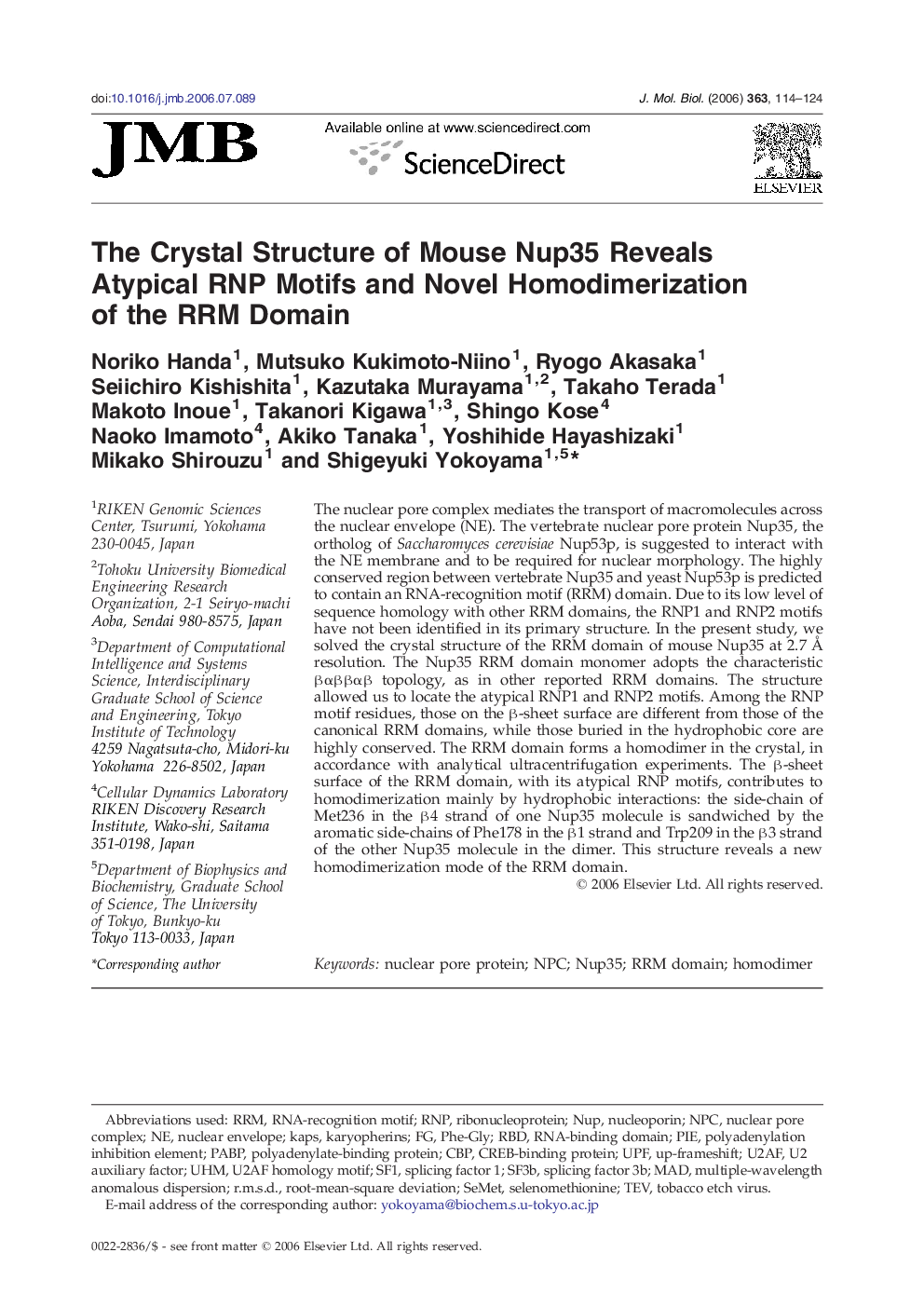| Article ID | Journal | Published Year | Pages | File Type |
|---|---|---|---|---|
| 2189018 | Journal of Molecular Biology | 2006 | 11 Pages |
The nuclear pore complex mediates the transport of macromolecules across the nuclear envelope (NE). The vertebrate nuclear pore protein Nup35, the ortholog of Saccharomyces cerevisiae Nup53p, is suggested to interact with the NE membrane and to be required for nuclear morphology. The highly conserved region between vertebrate Nup35 and yeast Nup53p is predicted to contain an RNA-recognition motif (RRM) domain. Due to its low level of sequence homology with other RRM domains, the RNP1 and RNP2 motifs have not been identified in its primary structure. In the present study, we solved the crystal structure of the RRM domain of mouse Nup35 at 2.7 Å resolution. The Nup35 RRM domain monomer adopts the characteristic βαββαβ topology, as in other reported RRM domains. The structure allowed us to locate the atypical RNP1 and RNP2 motifs. Among the RNP motif residues, those on the β-sheet surface are different from those of the canonical RRM domains, while those buried in the hydrophobic core are highly conserved. The RRM domain forms a homodimer in the crystal, in accordance with analytical ultracentrifugation experiments. The β-sheet surface of the RRM domain, with its atypical RNP motifs, contributes to homodimerization mainly by hydrophobic interactions: the side-chain of Met236 in the β4 strand of one Nup35 molecule is sandwiched by the aromatic side-chains of Phe178 in the β1 strand and Trp209 in the β3 strand of the other Nup35 molecule in the dimer. This structure reveals a new homodimerization mode of the RRM domain.
